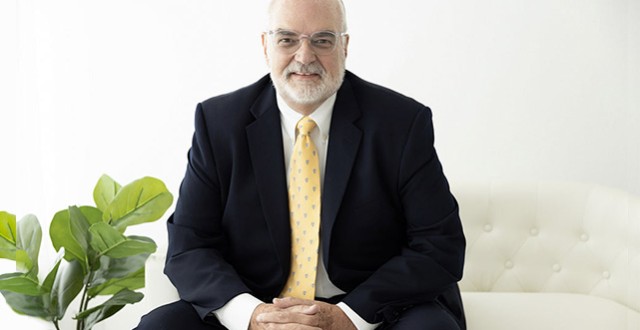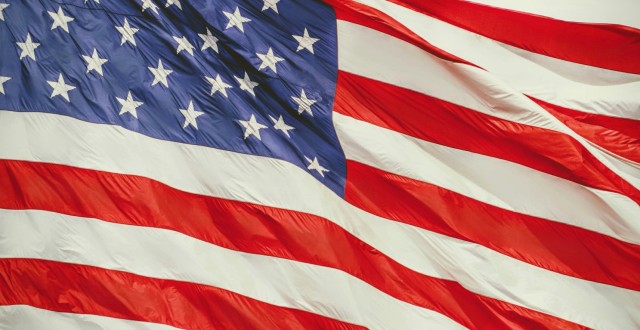
- Mediation
- Arbitration
- Court Neutrals
- Online Dispute Resolution
- Technology
- Court Decisions
- More
- Legislation
- Healthcare
- Guest Posts
- John DeGroote
- John C. Fleming
- Rick Freeman
- Professor Peter Friedman
- Honorable W. Royal Furgeson, Jr.
- James M. Gaitis
- Laura A. Kaster
- Professor John Lande
- Philip J. Loree, Jr.
- Michael McIlwrath
- F. Peter Phillips
- Professor Alan Scott Rau
- Professor Thomas J. Stipanowich
- Professor S.I. Strong
- Richard Webb
- Glen M. Wilkerson
- International arbitration
- Regulation
- Sports and Entertainment
- We’re Back!!!!Well, it’s been a while since we published and that is about to change. Since I spent much of last year becoming
 JAMS Welcomes Karl Bayer to its Panel of NeutralsJAMS, the world’s largest private alternative dispute resolution (ADR) provider, is pleased to announce that Karl Bayer
JAMS Welcomes Karl Bayer to its Panel of NeutralsJAMS, the world’s largest private alternative dispute resolution (ADR) provider, is pleased to announce that Karl Bayer Class Action Waivers in Arbitration Agreements: The Twenty-First Century Arbitration Battleground and Implications for the EU CountriesLinda S. Mullenix, Morris & Rita Atlas Chair in Advocacy at the University of Texas School of Law, has written “Class Ac
Class Action Waivers in Arbitration Agreements: The Twenty-First Century Arbitration Battleground and Implications for the EU CountriesLinda S. Mullenix, Morris & Rita Atlas Chair in Advocacy at the University of Texas School of Law, has written “Class Ac Picking the Proper Technological Tool for Problem-Solving in ArbitrationProfessor Amy J. Schmitz, John Deaver Drinko-Baker & Hostetler Chair in Law and Co-Director of the Translational Data An
Picking the Proper Technological Tool for Problem-Solving in ArbitrationProfessor Amy J. Schmitz, John Deaver Drinko-Baker & Hostetler Chair in Law and Co-Director of the Translational Data An
Recent Posts
GUEST-POST PART I | Questions Clients Have about Mediation: What is Mediation?
By Kent B. Scott and Cody W. Wilson This series of posts will pose questions that clients have about mediation. We have found that mediation is most successful when attorneys and clients work through these questions together and map out a plan to achieve their objective—an agreed settlement rather than a resolution imposed by a judge, jury or arbitrator. The questions clients have about mediation are tools that can be used to design a successful mediation. The mediator’s understanding of these questions can provide a framework in which to conduct productive mediations. What Is Mediation? How Does It Work? Clients who have not previously participated in mediation will have no idea what mediation is or how it differs from arbitration or litigation. Thus, “What is mediation?” is likely to be the client’s first question. Mediation is one of several alternatives to litigation. It is the most informal of the alternatives (a more formal alternative is arbitration) and the only one that gives the parties control over the outcome. Mediation is sometimes called a facilitated negotiation. The facilitator is the mediator, who must be neutral and have no interest in the dispute. The mediator is there to help the parties persuade each other that it is in their best interests to settle. The mediator does this by helping the parties find common ground and a basis for settlement. The mediator usually meets at least once with the parties together and then conducts private meetings with each side. This encourages each party to speak candidly with the mediator about its interests and needs that must be met in order for a settlement to occur. Many mediators give “homework” for one side to do while they are in private caucus with the other side. The parties to mediation have an obligation to participate in good faith. But they have no obligation to reach a settlement. That decision is completely voluntary. Am I Required to Mediate? The client may have sought out legal counsel without knowing whether it has an obligation to mediate. In a commercial dispute, the answer will usually be in the transaction documents. For example, mediation is now a requirement of some standard form construction documents. If the transaction documents are silent as to mediation, the parties can agree to mediate after a dispute arises. This is true even if they have a contract requiring arbitration or litigation. However, one party cannot force the other to mediate. A client may not ask specifically about court-annexed mediation, but this is relevant to the question of whether the client might be required to mediate. Courts in many jurisdictions require parties to mediate before allowing them to proceed to trial. In our jurisdiction, an increasing number of judges require attorneys to include a statement in their planning reports or scheduling orders that set out their plans for pre-trial mediation. So if the court would require mediation before trial, the client should consider whether it might be better off in private mediation where the parties can select the mediator of their choice and the rules under which they will mediate. Part II will discuss the advantages and disadvantages of mediation. Stay tuned. [Ed. note: the contents of this post were first published on a different form in the May/July 2008 Edition of the AAA Dispute Resolution Journal.] Kent B. Scott is a shareholder in the law firm of Babcock Scott & Babcock in Salt Lake City whose practice focuses on the prevention and resolution of construction disputes. As a mediator and arbitrator, Mr. Scott currently serves on the AAA’s panel of mediators and the AAA’s Large Complex Construction Case Panel. He also serves on the arbitration and mediation panels for the U.S. District Courts (District of Utah), State District Court (Utah) and Utah Dispute Resolution. Mr. Scott is a founding member of the Dispute Resolution Section of the Utah Bar and a Trustee for the Utah Council on Conflict Resolution. Cody W. Wilson is an associate in the law firm of Babcock Scott & Babcock, concentrating his practice in the area of construction law, is licensed in all courts in the State of Utah, the U.S. District Court of Utah, the 10th Circuit Court of Appeals, the U.S. Court of Federal Claims and is a member of the ABA Forum on the Construction Industry. They can be reached at kent@babcockscott.com and cody@babcockscott.com.
Continue reading...U.S. Supreme Court Agrees to Hear Class Arbitration Waiver Case: AT&T v. Concepcion
Today, the U.S. Supreme court granted certiorari to AT&T Mobility v. Concepcion, No. 09-893. The Ninth Circuit opinion is available here. The question presented is: Whether the Federal Arbitration Act preempts States from conditioning the enforcement of an arbitration agreement on the availability of particular procedures–here, class-wide arbitration–when those procedures are not necessary to ensure that the parties to the arbitration agreement are able to vindicate their claims. Find links to the briefs at the SCOTUS Wiki here. Thanks to James M. Gaitis for the heads up and sharing the following article with Paul Lurie’s listserv: Consumer Arbitration Draws U.S. High Court Review in AT&T Case, Bloomberg Business Week, May 24, 2010. Stay tuned to Disputing for more legal developments. Technorati Tags: law, ADR, arbitration
Continue reading...Mediation Channel: Resources for Mediators
Last week, Diane Levin at the Mediation Channel had an interesting post with resources for mediators (thanks for the cite!). You can find the post here. As readers may know, Diane also maintains the impressive World Directory of ADR Blogs at ADRblogs.com where she lists dispute resolution blogs from all over the world. On a related note, Diane’s Mediation Channel received recently the ABA Journal Blawg Award for 2009. Congratulations Diane! From the Disputing Team, Karl Bayer, Alyson Chaky, Holly Hayes & Victoria VanBuren Technorati Tags: law, ADR, arbitration
Continue reading...Jazz Improves Physician-Patient Communication
By Holly Hayes The American Medical News published this week Jazz offers lessons for doctor-patient interaction. This article discusses the use of jazz music to help physicians hone their patient communication skills. Dr. Paul Haidet, president-elect of the American Academy on Communication in Healthcare says”Jazz is all about harmony in communication. When jazz musicians play, they play in a way that goes along with [how] the rest of the band is playing.” Dr. Haidet and Gary Onady, MD, PhD, an internist and pediatrician, led a session at the annual meeting of the American College of Physicians to educate physicians about using jazz characteristics to improve patient and family communication. They described a physician’s range of skills within his specialty as his instrument. They compared a patient’s chart with song sheets. The riff, they said, is a physician’s rapid recall of knowledge. A physician needs to be ready to improvise when he or she walks into an exam room and encounters unexpected aspects of a patient’s illness, Dr. Haidet said. But once in the room, physicians should not think of themselves as the only person in charge, Dr. Onady said. Rather, he recommends doctors “assign solos,” allowing the patient and others in the room to discuss their concerns one at a time. Doing so makes the patient realize the physician is listening. It also enables the doctor to hear more about symptoms and possible causes and gets a more complete picture of the medical problem or concerns, said Dr. Onady, professor of pediatrics and internal medicine at Wright State University Boonshoft School of Medicine in Dayton, Ohio. He also urges physicians to pay attention to patients’ body language. For example, if the patient is staring blankly while the physician summarizes medication instructions, it’s time to try a different approach, said Dr. Onady, a jazz musician in the Eddie Brookshire Quintet. “The doctor needs to think, ‘I’m not harmonizing with the patient. What is it going to take? Am I too technical? Is it my inflection?’” He acknowledges that physicians’ limited time makes thorough discussions with patients a challenge. But he points to jazz musicians who, when improvising, have to determine very quickly where they are going to take the music. Communicating efficiently in a small amount of time is a learned skill, Dr. Onady said. Read more on our post on how patients engage more in their own care when they are encouraged to do so by their physician. We welcome your thoughts on physician/patient communication. Holly Hayes is a mediator at Karl Bayer, Dispute Resolution Expert where she focuses on mediation of health care disputes. Holly holds a B.A. from Southern Methodist University and a Masters in Health Administration from Duke University. She can be reached at: holly@karlbayer.com.
Continue reading...Arbitration
Mediation
Healthcare Disputes
Legal Research
About Disputing
Disputing is published by Karl Bayer, a dispute resolution expert based in Austin, Texas. Articles published on Disputing aim to provide original insight and commentary around issues related to arbitration, mediation and the alternative dispute resolution industry.
To learn more about Karl and his team, or to schedule a mediation or arbitration with Karl’s live scheduling calendar, visit www.karlbayer.com.






